
Looking for books
on this subject ?
A Guide To
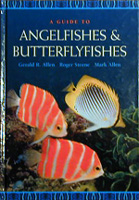
Angelfishes
& Butterflyfishes
The Conscientious
Marine Aquarist
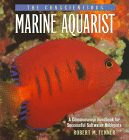
Ultimate Marine Aquariums
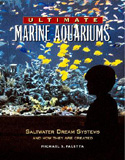
Saltwater
Dream Systems
|
|
|||||
|
Pygmy
Angelfishes - Centropyge sp. The pygmy angelfishes (genus: Centropyge) are the most popular and heavily traded of the marine angelfishes (family: Pomacanthidae) in our hobby today. The genus is the largest within the Pomacanthid family, comprising a total of 31 described species. The majority of these is intensely colorful, hardy and unlike larger marine angelfishes, can be kept in smaller aquariums. The Centropyge
group is the present focus of RCT’s research.
In nature, Centropyge have a non-specialized diet, feeding primarily on algae, detritus and interstitial fauna. In the aquarium they should be provided with a balanced diet. We’ve had best results conditioning our broodstock on 2 to 3 daily feedings of a diverse seafood gelatin diet, rich in vitamins, pigments and highly unsaturated fatty acids. Spawning Pygmy Angelfishes Pygmy angelfishes are pelagic spawners, releasing their eggs directly into the water column. They predominantly live in a male-dominated social hierarchy referred to as harems. In nature, each harem consists of one large male and one to four smaller mature females and up to nine immature females. Every evening during the twilight hours, males undergo an intense mating ritual with each mature female in the harem. Spawning is commenced when the male rises with a female several feet above the reef substrate, while “nuzzling” here abdominal area. Climax is marked by a forceful thrust of his snout against the abdomen followed by split second body reversal, which lines up the orifice of both sexes. Eggs and sperm are then released in a single burst and fertilization occurs. The presence of an oil globule causes the eggs to rise from the spawning site, just above the reef substrate, to the plankton rich surface waters. A video clip of the Fisher's Angelfish spawning. Adult pygmy species that adapt well to captivity will often spawn without any special provisions. However, egg production can be poor and random when the proper diet and environmental conditions are lacking. In our experience, the keys to consistently achieving large, fertile spawns have been:
Culture and Larval Development of Pygmy Angelfishes The long and complex larval phase makes culturing the pygmy angelfishes very difficult. Compared to the larvae of commercially propagated species (clownfishes, dottybacks and many gobies), pygmy anglefish larvae demand a smaller, more nutritious and easily digested food source at hatching; are more sensitive to environmental changes (water quality, lighting, temperature) and require optimal nutrition throughout development; and take much longer to both reach and complete metamorphosis.
Pygmy angelfish species raised by RCT: The Fisher’s angel is a Hawaiian endemic species that is rarely seen in the aquarium trade. One of the benefits of this species, aside from its hardiness, is its small size. It can be kept in tanks as small as 20 gallons.
This species does well on all quality aquarium foods and, being sub-tropical, prefers a temperature from 74 to 80ºF. Adults reach a maximum size of three inches. The lemonpeel angel is among the most heavily traded pygmies. It is less aggressive than many other pygmies and a hardy and beautiful fish. It thrives on a diet rich in algae and should be kept in at least a thirty-gallon tank. This species has wide distribution and commonly occurs throughout most of Melanasia and Micronesia. Water temperature preferences are between 77 and 82º F.
Adults reach a maximum size of 5 inches. A harem of three lemonpeel pygmies has been spawning at our facility for over 5 years now. The flame angel is arguable the most common and well know pygmy species in the trade. It is more omnivorous than most other pygmies (which are primarily herbivorous) and considered very hardy. It can, however, also be quite aggressive towards its tank mates, esp. members of its own kind.
This species prefers water temperatures between 77 and 82º F and can occur
from Palau to the Hawaiian Islands. It is commonly collected from the Christmas
and Marshall Islands. Adults reach a maximum size of 4.5 inches. The multicolor angel used to be quite rare in the trade but now is more and more commonly seen. It has a relatively wide distribution, occurring from Palau to Tahiti and the Marshall Islands, but lives secretively in the deeper, 20 to 60 meter reef habitats.
We found this species to be exceptionally hardy and well suited for captivity. It thrives our gel diet, flakes and adult brine shrimp and prefers water temperatures from 76 to 81º F The Japanese Pygmy angel is a stunning fish and quite rare in the trade. It commonly occurs in the northwestern Pacific Ocean along Japan’s southern coast, particularly at the Izu Peninsula, but it can be found as far south as the northern most Hawaiian Islands. We found it thrives on a quality gel diet, small pellets, high-grade flakes and frozen adult brine shrimp.
Our wild adults require cooler water temperatures between 74 to 80º F but our first generation juveniles are now adapted and do well in water temperatures up to 82 degrees. Adults can reach up to 6 inches in length. Present Culture Constraints Raising marine ornamentals is difficult, the degree to which depends on the species in question. Species not cultured Species cultured experimentally Species cultured commercially Special thanks to
' Build Your Aquarium On-Line
'
___________________________________________
__________________________________________
_________________________________________
MACNA X
____________________________________________
|
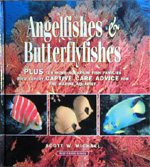
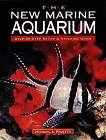
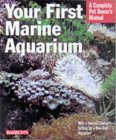
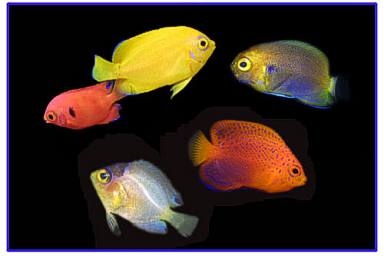




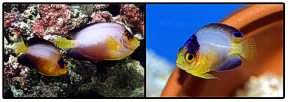




 Aquariums,
Ponds, Fish and Aquatic Information.
Aquariums,
Ponds, Fish and Aquatic Information.